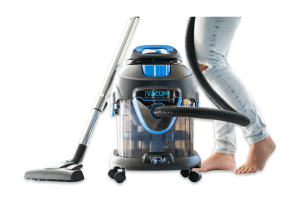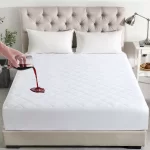Vacumi Vc3 Bagless Dust Mite Vacuum Cleaner.

A dust mite wet and dry vacuum cleaner is a specialized cleaning tool designed to effectively remove dust mites from various surfaces. Dust mites are microscopic organisms that thrive in household environments, particularly in areas such as bedding, upholstery, and carpets. These tiny creatures can trigger allergies and respiratory issues in individuals who are sensitive to them.
Unlike traditional vacuum cleaners, which may only remove surface debris, a dust mite wet and dry vacuum cleaner is equipped with advanced filtration systems that capture even the tiniest particles, including dust mites and their waste. This ensures a thorough cleaning process and helps improve indoor air quality.
The function of these vacuums allows for deep cleaning to dislodge dirt, debris, and allergens from carpets, upholstery, mattresses, and other surfaces. This helps to further eliminate dust mites and their allergenic waste products.
Dust mite wet and dry vacuum cleaners are particularly beneficial for individuals who suffer from allergies or asthma as they provide a more thorough clean compared to regular vacuum cleaners. They can be used in bedrooms, living rooms, offices, or any other areas where dust mites may accumulate.
It’s important to note that while these vacuums can be effective in reducing dust mite populations, they are just one part of an overall comprehensive approach to managing allergies or asthma triggered by these pests. Regularly washing bedding at high temperatures, using hypoallergenic covers on mattresses and pillows, reducing humidity levels in the home, and maintaining proper ventilation are all additional measures that should be taken for optimal control of dust mites.
What are Dust Mites:
Dust mites are tiny, microscopic organisms that belong to the arachnid family. They are not visible to the naked eye and are commonly found in indoor environments, particularly in areas where dust accumulates. These minuscule creatures thrive in warm and humid conditions, making our homes an ideal habitat for them.
Dust mites thrive in warm and humid environments, making our homes an ideal habitat for them. They can be found in various areas within our living spaces, such as bedding, upholstered furniture, carpets, curtains, and stuffed toys. These tiny creatures feed on dead skin cells shed by humans and pets, which are abundant in these areas.
It is important to note that while dust mites themselves do not bite or sting humans, their waste products can trigger allergic reactions in some individuals. People who are sensitive or allergic to dust mite allergens may experience symptoms like sneezing, coughing, itching, watery eyes, or even asthma attacks.
Regular cleaning and maintaining a clean indoor environment can help reduce the presence of dust mites. Washing bedding frequently in hot water, using allergen-proof covers on mattresses and pillows, vacuuming regularly with a HEPA filter-equipped vacuum cleaner, and reducing humidity levels through proper ventilation or dehumidifiers are some effective measures to control dust mite populations in our homes.




